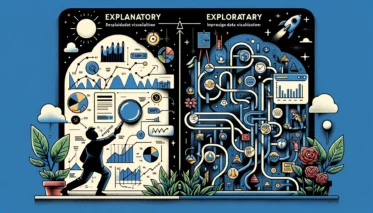Why is storytelling (not) essential for effective data visualization?
There are explanatory and exploratory data visualizations. One tells a story and therefore needs a story, while the other helps to find a story or the lack thereof (which is not a negative outcome).
Some data visualization practices enhance both explanatory and exploratory data visualizations, making it easier to discern a story. However, exploratory data visualization (a dashboard) does not necessarily contain a story. And it’s not designed to tell a story.
It’s designed to assist end users in data exploration, comprehension, and potentially in discovering a story or multiple stories. Once a story is identified, users can create a data storytelling report and present it to other stakeholders.
Data storytelling is important in data visualization. But the term “data storytelling” is often misused. For instance, when a developer creates a dashboard with numerous slicers (for data exploration?) and claims, “Look, my dashboard tells a story; we sold products worth $50M in 2023”.
It’s not a story. It’s a fact. Is there a story behind this fact? And if you’ve created a report that tells the story, then why all that slicers? With all the slicers it’s a maze with a million of choices, not a story.
Begin by understanding what you are creating: an exploratory tool (a dashboard equipped with multiple slicers, drill-down, drill-through, and other exploratory features) or an explanatory report designed to tell a story (for which you must already know the story).

